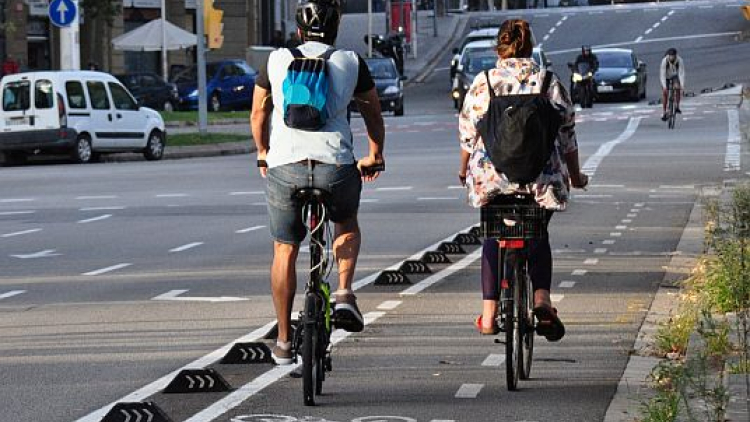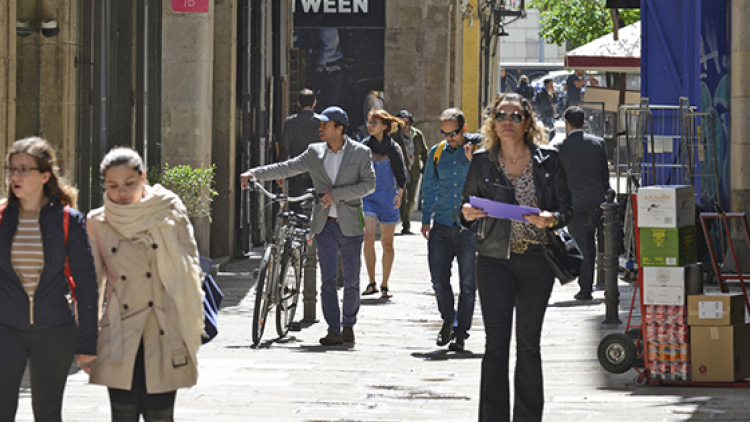Type of route
On urban roads, bicycle traffic should use cycle lanes, the roadway and specially adapted areas. "Specially adapted areas" means legally established, designated bicycle lanes, those where road signs allow cycling and those where there is some form of explicit authorisation.
Bike-lane network
Streets and spaces where there is a specific lane for bicycle traffic.
It is best if these lanes are on the roadway but they can be on the pavement as well. They may also be one-way or two-way, and may or may not be segregated, that is, clearly separate from the roadway.
The bike-lane network is for bikes and scooters.
Barcelona City Council aims to increase the number of kilometres of bike lanes substantially, so that 95% of the city's population has at least one bike lane within 300 metres of their homes.
Consequently, various interventions are planned on the city's streets to achieve the full roll-out of the bike lane network. In most places new bike lanes are being created, although in some spots improvements are being carried out, such as lowering the bike lanes onto the road.
To achieve this, a bike lane design handbook has been drawn up with the aim of improving cyclists' safety, reducing disputes with pedestrians, improving the connectivity of new bike lanes, signposting and road markings, regulations, design and all related aspects.
Between 2015 and the present, cycling infrastructure has doubled in size to create the current network of over 240 kilometres.
The target for 2023 is to reach 272.6 kilometres.
A clearly differentiated feature with road signs and markings for bicycle traffic.
The cycle lanes may be:
Deployment of the cycle lane network
Types of bike lanes




Cycle ways
Streets and roadways where bikes can be ridden but which they have to share with other means of transport.






Ronda Verda
The Ronda Verda, or "greenway", is a semi-urban cycle route round Barcelona which passes through L'Hospitalet de Llobregat, Esplugues de Llobregat, Cerdanyola del Vallès, Montcada i Reixac, Santa Coloma de Gramanet and Sant Adrià de Besòs. There is also an alternative route, an extension to the Ronda that includes Badalona. The Ronda Verda has been designed as a recreational cycle route through parks, gardens and large avenues, but it is also integrated into the basic bicycle networks of the municipalities involved. Standard signs on the route inform cyclists of the links with local networks and the main points of cultural interest.






